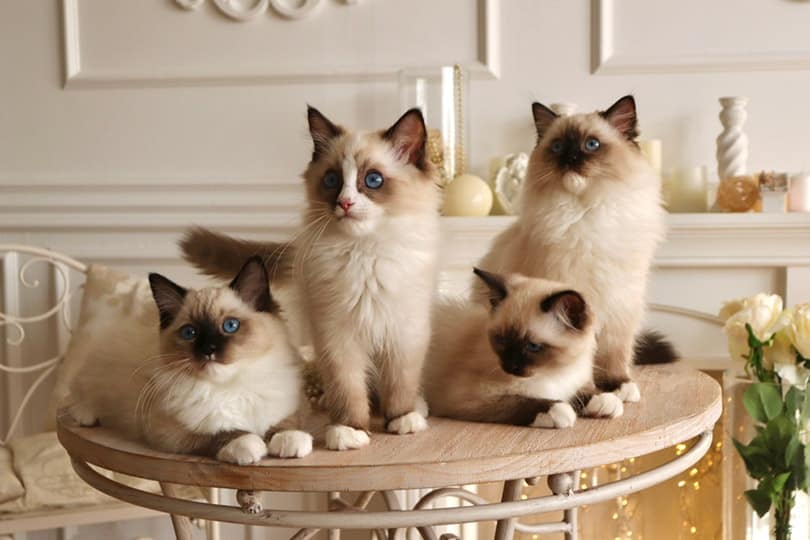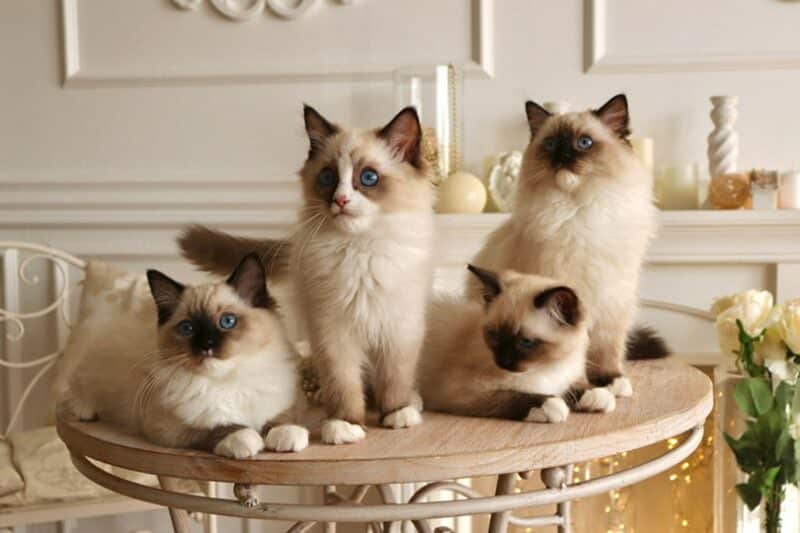Catster advocates for adopting before shopping, though we fully understand there are many reasons for seeking a breeder. So, we encourage it to be done the right way. We have not personally visited or investigated all of the breeders below. We have put the top-recommended all in one place for you to get in touch and make the best decision for you. Learn more about our stance and how to choose the right breeder here.
With their gorgeous eyes and fluffy coats, Ragdolls are attention-grabbers based on looks alone. Combined with their loving, affectionate personalities, these felines are truly irresistible to many cat owners.
Ragdoll breeders are found in all corners of Iowa, from cities to farmlands. As you check out prospective catteries, remember that while Iowa recently improved its animal welfare protections, you should still be extra vigilant. Be sure you choose a responsible breeder who prioritizes the health of their Ragdolls.
The 7 Ragdoll Kitten Breeders in Iowa
1. Ragdalore

- Spencer, IA
This is a home-based cattery with all cats and litters raised with the breeder’s family. The breeder’s males and females are all tested for common Ragdoll inherited diseases, as well as for different color genes. They have males and females in several different Ragdoll colors. For an extra fee, they allow potential kitten buyers to request a specific breeding pair be matched.
2. CelesTrail Cats

- Ottumwa, IA
This is a small cattery dedicated to both breeding and showing Ragdoll cats. They prioritize raising well-socialized kittens and keep their litters together and in the home until they are 12 weeks old. The breeders require their kitten buyers to agree to keep the cats indoors and never declaw them. Both male and female breeding cats are genetically tested for a heart condition called hypertrophic cardiomyopathy (HCM), which is known to impact Ragdoll cats.
3. Macushla Ragdolls
- Waterloo, IA
This very small home breeding operation is run by a veterinary technician. Not surprisingly, the owner prioritizes the health of both parents and kittens and only produces a few litters a year. All the kittens are home-raised to send well-adjusted babies to their new families. Based on the many positive reviews and repeat customers this breeder has received, the Ragdolls from this cattery are sweet, healthy, and wonderful pets.
4. Brier Rose Ragdolls

- Burlington, IA
Another small home-based cattery, this breeder typically only has one to two litters a year. They focus on breeding Ragdolls with fantastic personalities, even more than size and beautiful coats. Their kittens are available in seal, blue, lynx, flame, tortie, and cream colors and are socialized to people (and dogs) for 10–12 weeks before going home. The cattery often has retired breeding adults available for sale as well.
5. Rustic Ragdolls

- Jefferson, IA
A small breeding operation run by a veterinarian, this cattery only recently relocated to Iowa. Health is a priority for this breeder, and all males and females are genetically tested for HCM before mating. The kittens are home-raised and under the constant care of a veterinarian until they go home.
6. Lil Darling Ragdolls

- Greene County, IA
This cattery offers Ragdolls in a rainbow of colors and socializes and litter-trains the kittens before they head to new homes. Numerous positive reviews for this breeder explain why they often have a six month or more wait for a kitten. The breeder requires pet-quality cats to be spayed or neutered and charges extra for breeding and showing rights to their kittens.
7. Flower Baby Ragdolls

- Chariton, IA
This family cattery is owned by a stay-at-home mom who lives on a sustainable homestead in Iowa. All the adult cats are genetically screened before breeding, and kittens are raised with the family. The breeder is particular about who they sell a kitten to. They are upfront about the fact that they want to get to know prospective owners before deciding if they’re a good fit. They also spay or neuter all kittens before they leave for their new homes.
Related Reads:
Featured Image Credit: RoseAndFlame, Shutterstock












